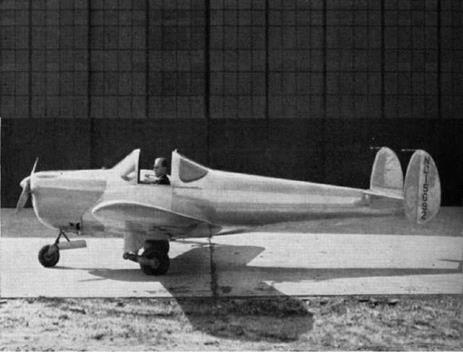1948 and 1966 NACA and NASA Test Series
Robert Gilruth’s codified requirements for satisfactory flying qualities of 1941 opened the way to apply flying qualities technology to the safe airplane problem. Paul A. Hunter made the first NACA flying qualities measurements specifically on personal-owner airplanes in 1948. This was followed by a second test series on light airplane flying qualities (Barber, Jones, Sisk, and Haise, 1966).
The seven light airplanes tested in 1966 were bigger, heavier, and more complex than the group of five looked at in 1948. Four of the seven were twin-engined; the single-engine ships were the straight and vee-tailed Beech Bonanza and a 285 HP Cessna Skylane RG. In keeping with NASA’s practice at that time, data presented are not identified as having come from specific airplanes.
Reported flying qualities problems ranged from rather trivial trim change difficulties to more serious issues. As in the case of the Spitfire and DC-3 (Chapter 3), static longitudinal instability was present for some of these airplanes within their normal loading ranges, especially with flaps down and high power settings. Bobweights and downsprings provided stable force gradients in some cases, without improving stick-fixed stability. Low Dutch roll damping reduced the accuracy of instrument approaches in turbulence (Figure 15.4).
Dangerous stalling characteristics were encountered in the tests. Quoting from the Barber report:
|
Figure 15.3 The 1940 ERCO Ercoupe, as first produced. (From Weick, From the Ground Up, 1988) |
Two of the aircraft tested have unacceptable power-on stall characteristics in the landing configuration. The lateral-directional trim changes of one aircraft show that the addition of power introduces a left yawing moment and that the pilot must use full right rudder to maintain heading when near the stall speed. The large yawing moment due to power coupled with the lack of rudder authority causes the aircraft to encounter an uncontrollable left roll/yaw motion at the stall. This motion places the aircraft in a spin that requires 600 to 1200 feet of altitude for recovery. All of the evaluation pilots exceeded the gear and flap placard speeds when recovering from this spin. Another aircraft has a rapid left rolloff in the power-on accelerated stall with landing flaps extended. The rolloff is difficult to stop in less than 60 to 70 degrees of left bank without anticipation and instantaneous recovery control on the part of the pilot. Such a stall may occur when a pilot tightens his final turn in the landing pattern to prevent overshooting the runway. From a left turn, the attendant rolloff, on occasion, proceeded to a nearly inverted attitude that required 200 to 300 feet of altitude to recover.
One is left to wonder how those two airplanes ever got to be certified as airworthy by the Federal Aviation Administration.












